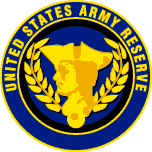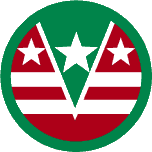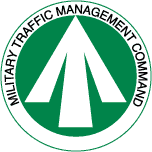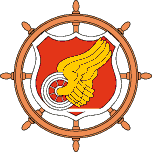
Military Service
| Date | Event | Location |
| 10/18/86 | Armed Services Vocational Aptitude Battery (ASVAB) | Seattle, WA |
| 11/22/86 | Enlisted in United States Army Reserve | Seattle, WA |
| 11/22/86 | Unit of Assignment, 1395th USATTB | Ft. Lawton, WA |
| 7/7/87 | Initial Entry Training (IET) | Ft. Dix, NJ |
| 9/10/87 | Hand Grenade Assault Course Qualification - Expert | Ft. Dix, NJ |
| 9/11/87 | M-16A1 Rifle Qualification - Expert | Ft. Dix, NJ |
| 9/13/87 | Advanced Individual Training (AIT) | Ft. Eustis, VA |
| 5/15/88 | School of Hazardous Material Handling (HazMat) | Ft. Lewis, WA |
| 10/5/89 | Loadout of Ar Rabbu, Port of Tacoma | Tacoma, WA |
| 9/7/90 | Primary Leadership Development Course (PLDC) | Camp Williams, UT |
| 9/16/90 | Participate in Desert Shield/Desert Storm | Los Angeles, CA |
| 5/29/92 | Basic Noncommissioned Officer Course (BNCOC) | Ft. Eustis, VA |
| 1/22/94 | Advanced Noncommissioned Officer Course (ANCOC) | Camp Murry, WA |
| 3/30/95 | Honorable Discharge from the Armed Forces of the USA | Ft. Lawton, WA |

![]() 1395th USA Transportation Terminal Brigade (USATTB)
1395th USA Transportation Terminal Brigade (USATTB)
| Mission | Organization | History | Duties |
| Mission | Organization | History |
![]() Military Traffic Management Command
Military Traffic Management Command
 1395th USA Transportation Terminal Brigade (USATTB)
1395th USA Transportation Terminal Brigade (USATTB)To provide traffic management and monitoring of commercial contracts for the movement of DoD cargo through designated port facilities worldwide, as directed by the MTMC commander. In other words, we work at a port facility and perform all the necessary steps to load a ship with cargo, from receiving the cargo by rail, truck, etc. to creating the stow plan to the actual loading operation and tracking of military equipment and personnel through a foreign or domestic theater.
The 1395th Transportation Terminal Brigade (USATTB) is an Army Reserve unit located in Seattle, WA and is a subordinate unit of the 124th Army Reserve Command (ARCOM). It is an asset of the Military Traffic Management Command (MTMC) as well as part of the Transportation Corps - The Spearhead of Logistics.
The
Supervise and assist in the movement of Department of Defense (DOD) cargo through the Ocean Terminal. Supervise the work of military and civilian stevedores, plan, direct and control operation of 20 subordinate personnel. Interpret and verify movement schedules. Prepare pre/stow plans. Operate the Computerized Deployment System (CODES). Assist in planning future transportation requirements. Operate and further develop the Logistics Applications of Automated Marking and Reading Symbols (LOGMARS) system. Additional duties included publishing the unit's monthly newsletter and training personal in operation of the CODES and LOGMARS systems.
 124th Army Reserve Command (ARCOM)
124th Army Reserve Command (ARCOM)The U.S. Army Reserve is the active Army's federal reserve force. It is made up of highly trained and ready-to-go combat support and combat service support forces that can move on short notice to give the active Army the resources it needs to deploy overseas and to sustain combat troops during wartime, contingencies or other operations. It is the Army's main source of transportation, medical, logistical and other units, and it is the Army's only source of trained individual soldiers to augment headquarters staffs and fill vacancies in units.
The Army Reserve consists of the Selected Reserve (troop program units and individual mobilization augmentees), the Individual Ready Reserve (IRR) and the Retired Reserve, totaling more than 1,000,000 reservists, upon whom the President can call when needed. The drawdown of the Selected Reserve will achieve an end strength of 208,000 soldiers by 1998.
The Office of the Chief, Army Reserve (OCAR), develops and executes Army Reserve plans, policies and programs, administers USAR personnel, operations and construction funds and commands the Army Reserve Personnel Center (ARPERCEN). The Chief, Army Reserve (CAR), also serves as the Commander of the US Army Reserve Command (USARC) and as the Deputy Commander of Forces Command for Reserve Forces.
The USARC commands all continental United States (CONUS) Army Reserve units except for civil affairs and psychological operations units, which currently fall under the US Army Civil Affairs and Psychological Operations Command (USACAPOC). There are also three Army Reserve Commands (ARCOMs) outside the United States.
The USARC recently reorganized its command and control structure to bring it in line with the new end strength, to enhance its ability to train and mobilize Army Reserve units and to reflect its expertise in combat support and combat service support functions.
The new structure consists of 10 Regional Support Commands (RSC), three Regional Support Groups (RSG) and 37 specialized commands. The RSCs command, control and support units in a geographical area. The others command, control and support units in specific functions, such as medical, logistics, engineer and training.
The Army Reserve traces its origin to 1908, when Congress authorized the establishment of a medical reserve corps that could be ordered to active duty to support the Army. In 1912 Congress authorized an Army Reserve of trained citizen-soldiers, and in 1916 the National Defense Act created the Officer Reserve Corps and the Enlisted Reserve Corps.
Once established, the Army Reserve became an immediately valuable resource to the Army. More than 160,000 served on active duty during World War I and more than 200,000 served in World War II, often providing much-needed leadership to a rapidly expanding Army.
More than 240,500 Army Reservists were activated for the Korean War, with 14 battalions, 40 companies and a large number of individuals going to Korea. In 1961 almost 69,000 USAR soldiers were activated for to the Berlin Crisis. During the Vietnam War, Army Reservists were again activated, with 35 units serving in Vietnam.
Since then, Army Reservists have been activated to serve in Grenada, Panama, Southwest Asia, Somalia and Haiti. Of these, the activation for Operation Desert Shield/Desert Storm was the largest, with approximately 85,000 being activated and 40,000 serving in Southwest Asia. Among these were approximately 20,000 IRRs, who filled vacancies in units or performed other specialized duty. During those operations, Army Reservists provided transportation, medical, civil affairs, postal, engineer, military police, maintenance and many other kinds of support.
Army Reservists also have supported active Army peacetime missions, providing both specialized skills and manpower to relieve the workload on active forces. They have supported the airlift of food and medical supplies to refugees in Bosnia, provided a portion of a Multinational Force and Observer battalion in the Sinai and repaired and shipped back to the United States equipment left behind by units deploying from Europe as a result of the drawdown of active Army forces.
 Military Traffic Management Command (MTMC)
Military Traffic Management Command (MTMC)Support the Department of Defense Components and the mobilization community worldwide during peace and war with proactive planning, immediate response to crisis and 21st Century technologies.
The Military Traffic Management Command traces its organizational lineage to the Army's former Office of the Chief of Transportation, established July 31, 1942. Fourteen years later, a separate agency was established to carry out traffic management functions. It began when the Secretary of Defense designated the Secretary of the Army as the single manager for traffic management within the United States on May 1, 1956. The Military Traffic Management Agency (MTMA) was established shortly thereafter, on July 1, to carry out the single manager functions.
MTMA was transferred to the newly established Defense Supply Agency (DSA) and redesignated as the Defense Traffic Management Service (DTMS) on January 1, 1962. After a detailed study of the Defense Transportation System, the Secretary of Defense designated the Secretary of the Army as the single manager for military traffic, land transportation, and common-user ocean terminals on November 19, 1964. A joint service planning staff was then formed and charged with establishing an agency--the Military Traffic Management and Terminal Service (MTMTS)--to execute this centralized management concept.
MTMTS was formally activated as a jointly staffed Army major command on February 15, 1965 and assumed all responsibilities assigned to the Defense Traffic Management Service and the terminal operations responsibilities of the US Army Supply and Maintenance Command. With the approval and publication of its single manager charter on June 24, 1965, MTMTS joined the Military Air Transport Service (now Air Mobility Command) and the Military Sea Transport Service (now Military Sealift Command) in providing complete transportation services to the Department of Defense. MTMTS was redesignated as the Military Traffic Management Command on July 31, 1974 to have its title more readily identifiable with its mission.
The millions of tons of cargo and thousands of troops moved to support Operation DESERT SHIELD was the largest test of the military's logistical capability since the Normandy invasion in World War II. MTMC personnel successfully managed the movement of 85 percent of unit equipment to Saudi Arabia through its ports during this historic event. They operated out of 33 ports loading more than 945,000 pieces of equipment weighing 6.5 million measurement tons onto 564 ships bound for Saudi Arabia. At the peak of operations, 12 transportation units, 225 volunteers, and 73 Individual Mobilization Augmentees from the Reserve components were activated to support DESERT SHIELD missions. Under the Special Middle East Shipping Agreements, MTMC booked 37,000 forty-foot commercial containers with sustainment supplies aboard commercial liners bound for Southwest Asia.
 Transportation Corps - The Spearhead of Logistics
Transportation Corps - The Spearhead of LogisticsDevelop transportation concepts and doctrine. Perform transportation unit operations, to include truck, boat, rail and trailer/cargo transfer operations. Plan, schedule, and supervise the use of each mode of transportation for the effective movement of personnel and cargo for the Department of Defense as well as the Army. Provide terminal services for all modes of transportation and stevedoring services at fixed ports and unimproved beach sites. Provide transportation engineering services. Provide direct (DS/GS) maintenance and supply for marine and rail equipment.
Provide transportation services to the Army, the Department of Defense and other government agencies in peace and war.
The Transportation Corps is one of the youngest and smallest of the Army's service branches. Established by President Franklin Roosevelt on 31 July 1942 in response to the overwhelming mobilization demands of World War II, the Transportation Corps organizes and coordinates the movement needs of the Army in the United States and overseas.
During World War II, the Transportation Corps conducted operations in the deserts of North Africa, the jungles of the Pacific theater, over the beaches of Normandy and throughout Europe. From its inception in 1942 through 1945, transporters moved 30 million soldiers in the United States and carried 7 million soldiers and 126 million tons of supplies overseas, playing a decisive part in the Allied victory.
The Berlin Airlift from 1948-49 kept the Allied portion of Berlin sustained until the Russians allowed supplies to recommence. The success of the airlift was due in large part to the dedication and skill of Transportation Corps soldiers. Transporters ensured smooth operations and cargo flow in Korea, Vietnam, Grenada, Panama and into Saudi Arabia. After the 82d Airborne Division, transporters from the 7th Transportation Group, FT Eustis, VA were the next soldiers to deploy to the Middle East, readying the ports, air terminals and lines of communication for the rest of the US military. Transporters are among the first to deploy and the last to return from conflicts and exercises wherever they occur. Without the expertise and dedication of the 2400 officers and 20,900 enlisted soldiers of the Transportation Corps, operations of the Army would literally grind to a halt.
On 26 July 1986, the Transportation Corps formally instituted the Regimental system of organization during the annual TC worldwide conference at FT Eustis, VA. The Regimental Crest and motto, "Spearhead of Logistics" were also formally adopted at this time.
Currently, the Transportation Corps is the third-smallest branch in the Army. Of the 2428 officers on active duty, 20% are female, 80% male. Between 120-160 TC 2LTs are assessed each year. TC is a shortage branch into which Combat Arms 1LTs and CPTs transfer each year, as the demand for Transportation Corps officers increases with rank.

Honorable Discharge from the Armed Forces of the United States of America. David Allen Day, SSG, USAR was Honorably Discharged from the United States Army on the 30th day of March, 1995. This certificate is awarded as a testimonial of Honest and Faithful Service.
Given under my hand in the city of Washington this thirtith day of March, 1995, Charles H. Hood, Major, GS